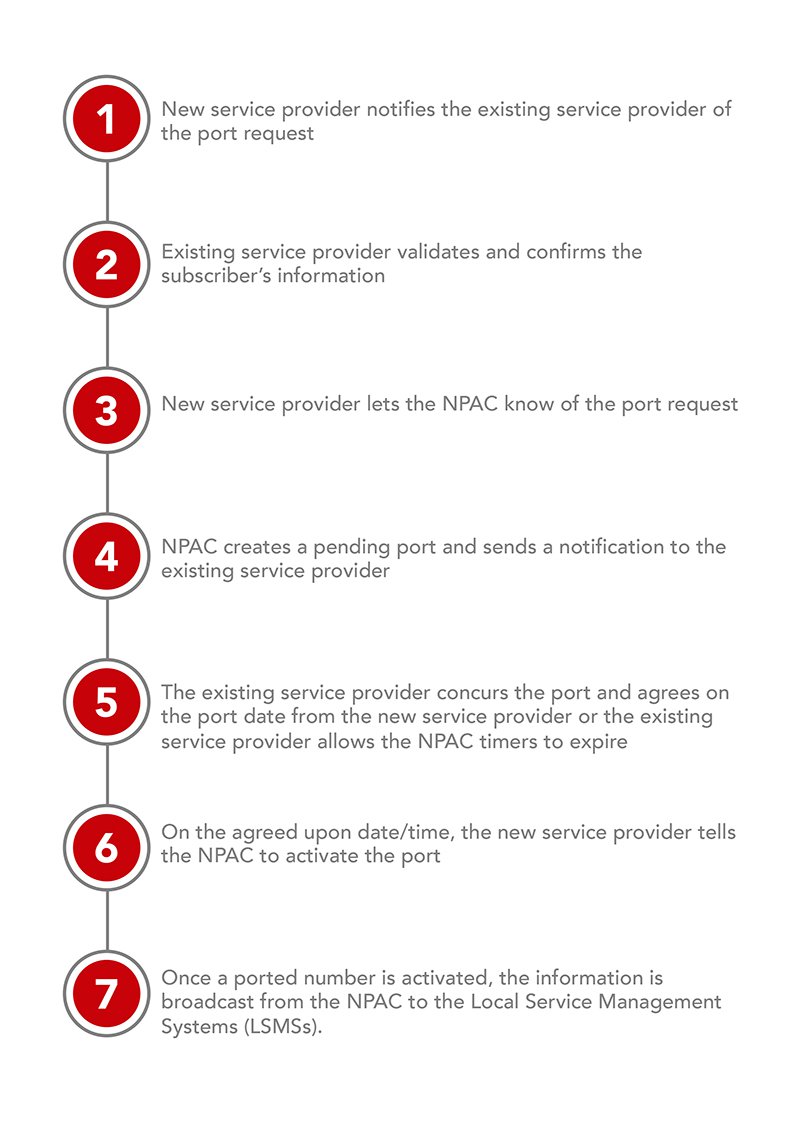
What makes LNP possible? The Location Routing Number
Number portability, the ability to switch Service Providers while keeping the telephone number, is made possible thanks to the Location Routing Number (LRN), a 10-digit unique telephone number that is assigned to each switch to support call routing through the Public Switched Telephone Network (PSTN).
Before the adoption of Local Number Portability (LNP), a telephone number’s original state, rate center, Service Provider and carrier type (wireline, wireless, or VoIP) were identified in the North American Numbering Plan (NANP) by the Number Plan Area (NPA), also known as the area code, and the NXX, which identifies the central office. That all changed with LNP.
With the introduction of LNP, telephone numbers could be ported between Service Providers. As a result, a new way of determining the network address of the serving switch was needed to ensure the call was routed correctly. This led to the creation of the LRN.
Reasons for porting
There are three reasons a telephone number might need to be ported:
Inter-carrier or competitive porting
When a telephone number moves from the current Service Provider to a new Service Provider.
Intra-carrier porting
When a telephone number moves from one switch to another within the same telecommunications Service Provider's network.
Number pooling
When a telephone number moves to a new Service Provider in blocks of 1,000 to create an inventory of unassigned telephone numbers.
How LRN Enables LNP
The LRN serves as the network address. It includes the NPA and the NXX for each telephone number. A single LRN can be used for every ported number served between a switch and the NPA/NXX-assigned location. The assignment of an LRN allows for LNP.

Subscription version, explained
Each telephone number entered into the NPAC is known as a subscription version. It contains a range of information including:
- Service Provider ID (SPID), which the LNPA assigns to all approved applicants to the NPAC
- Service Provider type, which includes wireless, wireline or VoIP
- Location Routing Number (LRN), which is a unique 10-digit telephone number assigned to each switch
- SS7 Destination Point Codes, which are unique addresses that identify individual network elements for a Signaling Point used in Message Transfer Part (MTP) to identify the destination of a Message Signal Unit (MSU)
Optional elements include:
- Service Type Alternative SPID
- Billing ID
- End user location and type
Call flow for ported telephone numbers
A call is made to a ported telephone number
- The Initiating Service Provider’s switch launches a query to find out if the number has been ported
- If yes, the LRN of the new switch is provided
- If no, the call is routed based on the telephone number
Steps of the LNP Porting Process
The entire porting process can take just minutes. The FCC has mandated simple one-number port requests be completed within one business day. The steps in the process include:

